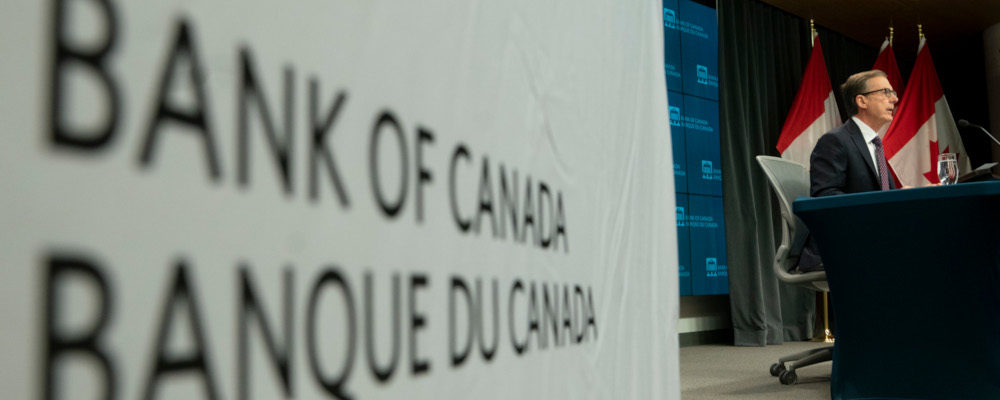The debate regarding the renewal of the mandate of the Bank of Canada has been reduced to a divide between the current single mandate of price stability—defined as keeping the annual inflation rate close to two percent—and a dual mandate combining price stability as well as economic performance, commonly measured by some type of business cycle measure such as full employment.
In some respects, this version of a dual mandate is really a return to the short-run policy trade-off between inflation and unemployment that characterized macroeconomic policy prior to the 1980s. This debate comes at a tumultuous economic time in which there are supply shocks, an expansion of the money supply to deal with the economic downturn of the pandemic, large deficits, and now to complicate things further, an inflationary upsurge that may or may not be transitory.
It remains that the role of the Bank of Canada as gleaned from the preamble to the Bank of Canada Act provides for a very broad interpretation of its role and mandates:
“WHEREAS it is desirable to establish a central bank in Canada to regulate credit and currency in the best interests of the economic life of the nation, to control and protect the external value of the national monetary unit and to mitigate by its influence fluctuations in the general level of production, trade, prices and employment, so far as may be possible within the scope of monetary action, and generally to promote the economic and financial welfare of Canada, ….”
In other words, the mandate of the Bank of Canada broadly defined includes mitigating fluctuations not just in prices—a price stability mandate—but in the national currency, trade, employment, and in general anything that might affect the economic and financial welfare of Canada. This can even include inequality or climate change.
Over the years, the Bank of Canada’s activities and preoccupations have indeed evolved to reflect the economic conditions and problems of the era; whether it was managing wartime debt, the boom of the post-war era, the value of the Canadian dollar at a time when we had fixed rather than flexible rates, the move to flexible rates, slowing economic growth and rising unemployment and inflation in the 1970s and 1980s, periodic financial crises and recessions in 1973-74, 1981-82, 1990-91 and 2008-09, and of course the relentless pace of globalization and technological change which also affected financial markets.
The outlook of the Bank of Canada in dealing with the economic world on behalf of Canadian economic interests has always been multi-dimensional, but in the wake of the experience of the 1970s and 1980s, the focus of the Bank has been on price stability. Indeed, the current emphasis on price stability has been a feature since the late 1980s when Governor John Crow explicitly set out price stability as the primary goal of monetary policy and inflation targets became the benchmark. The Bank’s objective was clear and the instruments of monetary policy—interest rates, money supply, and moral suasion—were all directed towards the clear objective of price stability. Moreover, this direction was not pursued in splendid isolationism but was a policy pursued by major central banks globally.
In the end, the Bank of Canada is limited in the number of tools or instruments available to pursue its objectives.
What changing the mandate really means is trading a clear objective—with all the necessary monetary tools available to meet that objective—for a set of multiple objectives which will require trade-offs and tools that may operate at cross-purposes. In the end, the Bank of Canada is limited in the number of tools or instruments available to pursue its objectives, and adding more targets than available instruments sets the stage for clashing policies and outcomes. Clear operating definitions aside, monetary policy that targets inflation alone is much simpler than one that tries to balance inflation with unemployment, economic growth, inequality, and climate change.
Raising interest rates to fight inflation could lead to unemployment or a reduction in investment needed to fight climate change or an appreciation in the currency that hurts exports. In an odd sense, monetary policy risks becoming a sort of game of whack-a-mole as the emphasis of the day oscillates from interest rates to inflation to unemployment or inequality or worse—it becomes a game of cat and mouse with very few cats and an awful lot of mice.
It is simple to state that there should be multiple targets, but how exactly to prioritize those targets and then pursue them is a much more complicated matter. Moreover, with multiple targets, the conduct of monetary policy risks becoming more politicized as various interest groups and constituencies line up behind their preferred target and lobby politicians who will in turn place pressure on the central bank.
The biggest downside to moving away from a mandate with one clear objective is that politics can ultimately become much more important in the operations of the Bank of Canada. While the Bank of Canada is generally independent in the conduct of its monetary policy, the ultimate responsibility lies with the government under the joint responsibility approach developed in the late 1960s in the aftermath of the James Coyne Affair. A broader set of mandates will simply expand the interest of politicians in the conduct of Bank of Canada monetary policy.




